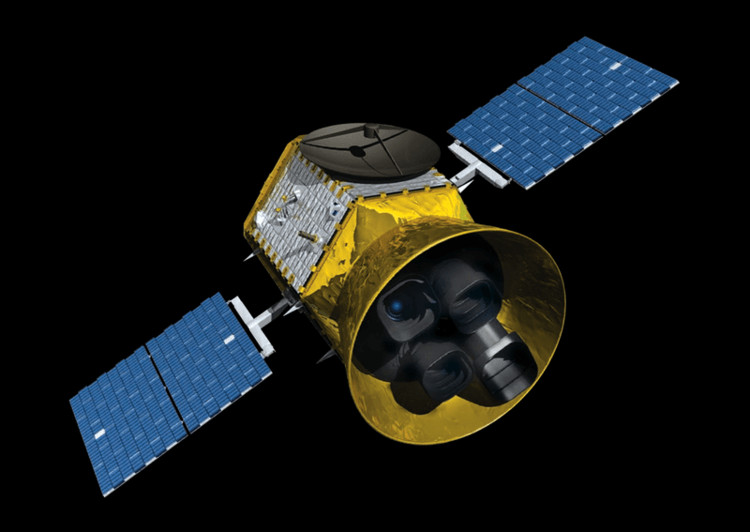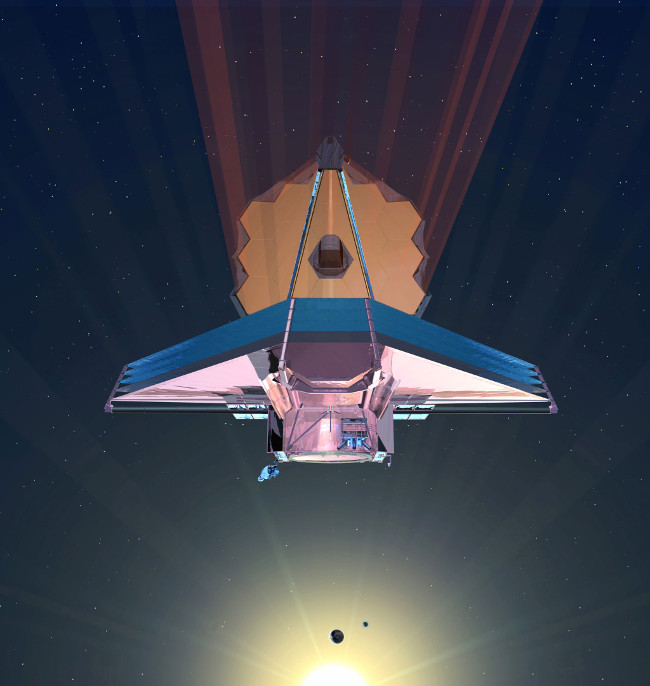In 2018, NASA launched a trump card to hunt life at 7 Earth-like planets
At the end of a very successful press conference at 14:00 on February 22, 2017 (ie 2 am on February 23, 2017 in Vietnam time), NASA was happy to announce the discovery of the Spitzer telescope's shock: Found System Sun version 2.0 is called TRAPPIST-1. Located about 40 light-years from Earth, in the constellation Aquarius, the Solar System 2.0 has seven Earth-like planets around their massive star.
NASA scientists in turn named them with names: TRAPPIST-1 (mother star) and 7 sub-planets, respectively TRAPPIST-1b, 1c, 1d, 1e, 1f, 1g and 1h.
NASA is planning to launch March 2017 TESS satellite (trump card 1) and James Webb telescope (trump card 2) in October 2018 to "total" search and measure things. Suitable event for life at surfaces as well as 7 extrasolar planets in the Solar System 2.0.
Like the Kepler observatory, the TESS satellite NASA plans to launch in March 2017 will use the method used to detect alien planets when their host star sheds light.
As planned, TESS will observe about 200,000 stars at hundreds of light-years away from Earth.

TESS satellite (trump card 1) of NASA.(Photo: NASA).

James Webb telescope (trump card 2) was launched into space by NASA in October 2018.(Photo: NASA).
7 months later, NASA plans to launch James Webb infrared telescope (JWST) in October 2017. NASA is expected to take the James Webb telescope to explore the surface of the outer planets of the Solar System 2.0.
Earlier, Spitzer Space Telescope (SST), worth $ 720 million, was launched into space by NASA on August 25, 2003 with the mission to explore the life of planets outside the Solar System.

Solar storms are one of the factors that can harm the planet's life if it is too close.(Photo: Wikimedia Commons).
Speaking of the risky possibilities that threaten the seeds of life at extraterrestrial astronomers, NASA astronomers say, the universe always has dangerous environments for life, including wind. sun, solar storm.
According to astronomer from Liege University, Belgium Michael Gillon, the mother star TRAPPIST-1 is a "calm" star. It's just like a giant molten plasma ball.
This makes scientists hopeful, TRAPPIST-1 is gentle enough for the planets to spin around it, enabling them to sprout and maintain life - just like how the Earth welcomes their Sun. me.
According to NASA scientists, the discovery of Solar System 2.0 is just the beginning. Journey to discover other great secrets awaiting scientists ahead.

Analyzes between 7 extrasolar planets of the Solar System 2.0 and our Solar System planets.(Photo: Businessinsider).
In the case, the Solar System 2.0 is a dead star system, it doesn't mean that the mission to find alien life and aliens on Earth is delayed.
"In the universe, which planet is hiding the life we have not yet discovered?", We currently do not know the exact answer, but one thing is certain:
"In the next few billion years, when our Sun runs out of fuel and the Solar System will only be a cold system, it is very likely that TRAPPIST-1 is" a new "stop for us."
Mother star TRAPPIST-1 will slowly burn hydrogen and gradually form a life environment for another 10,000 billion years. This time is 700 times the time that the universe existed. At that time, life can completely begin.
- Discover more than 700 planets outside the solar system
- NASA continues to hunt for dangerous meteors
- NASA announces new discovery from spacecraft to hunt for life
- America's trump card in the space race with Russia
- Journey to discover the Kepler spacecraft's
- NASA discovered more than 100 planets outside the Solar System
- The Milky Way has billions of planets close to Earth
- NASA is about to make a big decision in hunting down the planet Mars
- NASA has discovered 3 planets smaller than Earth
- It is possible to confirm life on three Earth-like planets over the next decade
- 700 million trillion planets are not like Earth
- Images of 1,235 planets may have life
 Van Allen's belt and evidence that the Apollo 11 mission to the Moon was myth
Van Allen's belt and evidence that the Apollo 11 mission to the Moon was myth The levels of civilization in the universe (Kardashev scale)
The levels of civilization in the universe (Kardashev scale) Today Mars, the sun and the Earth are aligned
Today Mars, the sun and the Earth are aligned The Amazon owner announced a secret plan to build a space base for thousands of people
The Amazon owner announced a secret plan to build a space base for thousands of people 'Strange smell' detected on cargo spacecraft to ISS
'Strange smell' detected on cargo spacecraft to ISS  NASA selects partners to explore Saturn's moon Titan
NASA selects partners to explore Saturn's moon Titan  NASA releases video about the evolution of the universe after 12 years
NASA releases video about the evolution of the universe after 12 years  NASA opens the lid of the asteroid sample box that was stuck for months
NASA opens the lid of the asteroid sample box that was stuck for months  4 NASA scientists complete a year of 'trial living on Mars'
4 NASA scientists complete a year of 'trial living on Mars'  NASA Captures 'Ghost Light' That's Catching Us
NASA Captures 'Ghost Light' That's Catching Us 